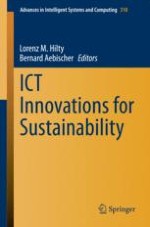2015 | OriginalPaper | Buchkapitel
The Material Basis of ICT
verfasst von : Patrick A. Wäger, Roland Hischier, Rolf Widmer
Erschienen in: ICT Innovations for Sustainability
Aktivieren Sie unsere intelligente Suche, um passende Fachinhalte oder Patente zu finden.
Wählen Sie Textabschnitte aus um mit Künstlicher Intelligenz passenden Patente zu finden. powered by
Markieren Sie Textabschnitte, um KI-gestützt weitere passende Inhalte zu finden. powered by
